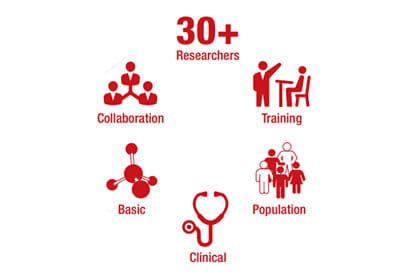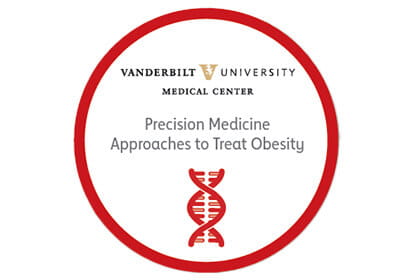Obesity
April 2017 - March 2021





By The Numbers
- $57.6M dollars in subsequent NIH and AHA funding, since the start of the Network
- 97 publications to date, an average of 24 per Center
- 37% of publications were co-authored with post-doctoral fellows and 31% included multiple investigators of the Network
- 10 subsequent clinical trials were initiated to further study complications of obesity
Notable Publications

What influences the “when” of eating and sleeping? A qualitative interview study, Appetite, Sept 2020
This study identified several influences on the timing of when people eat and sleep, including social and family influences and food availability, as well as differences in weekday and weekend schedules. These findings may be useful in designing behavioral interventions that address the timing of eating and sleeping to improve health and weight status.

A receptor of the immunoglobulin superfamily regulates adaptive thermogenesis, Cell Reports, Jul 2019
Regulation of energy homeostasis is a fine balance; on the one hand, energy homeostasis protects from nutrient deprivation but may cause obesity and consequent metabolic dysfunction upon nutrient excess (overfeeding of calorie-rich food). Identifying this key receptor to control responses to nutrient supply will lead to further understanding of how this relates to environmental and metabolic stress.

Mother-child cardiometabolic health 4–10 years after pregnancy complicated by obesity with and without gestational diabetes, Obesity Science and Practice, Feb 2022
Obesity in pregnancy and gestational diabetes (GDM) increase risk for cardiometabolic disease in mothers and children. Understanding the mechanisms that underlie risk for disease in these high-risk populations can lead to better knowledge of how prevent disease in the future. Findings from this investigation revealed that although obesity is already emerging in high-risk children at 4-10 years, obesity-related cardiometabolic disease may not emerge until after puberty.

Exploration of an alternative to body mass index to characterize the relationship between height and weight for prediction of metabolic phenotypes and cardiovascular outcomes, Obesity Science and Practice, June 2021
Body Mass Index (BMI) is a widely accepted parameter for health assessment, but has several limitations. Compared to BMI, modeling height and weight as independent, interacting variables results in less bias and improved predictive accuracy for all tested traits.
Notable Publications
- Collaboration between the NYU investigators of the basic and population project lead to a new link between the RAGE (receptor for advanced pathway glycation end products) pathway and energy expenditure in humans undergoing weight loss and sets the stage for future studies in identifying new pathways for changes in weight loss.
- Using NYU’s metabolomics infrastructure and expertise, NYU analyzed plasma samples from a subset of the JHU’s Clinical Project participants. Preliminary analyses suggest a difference in metabolites from both the glucose and lipids pathways. Using a metabolomics approach will lead to a better understanding of the potential mechanisms underlying the impact of time restricted feeding on metabolism. Notably, to date there have been no publications on the impact of time restricted feeding on metabolomics.
- The Obesity and Vascular Strategically Focused Research Networks collaborated and hosted a Nashville Retreat at Vanderbilt University in which included joint sessions on research efforts, career development workshops and collaborative opportunities to interact scientifically.
- Collaboration initiated by Dr. Shuey, postdoctoral fellow, led to a publication between Networks in Arteriosclerosis, Thrombosis and Vascular Biology, “Systems approach to integrating preclinical apolipoprotein e-knockout investigations reveals novel etiologic pathways and master atherosclerosis network in humans.”
- Dr. Kirk Habegger led a collaborative study between UAB and HudsonAlpha Institute for Biotechnology scientists. The epigenome wide-association study along with RNA-sequencing demonstrated that epigenetic modifications in utero led to defects in leptin signaling, increased caloric intake, and obesity.